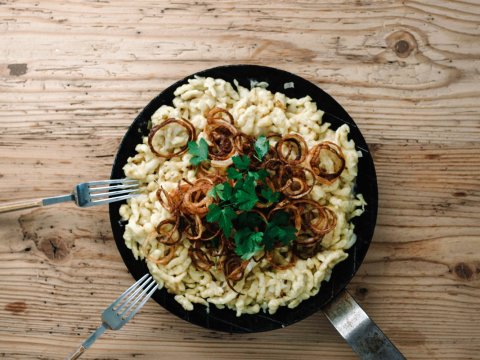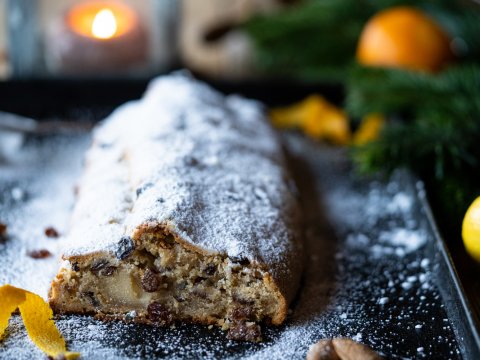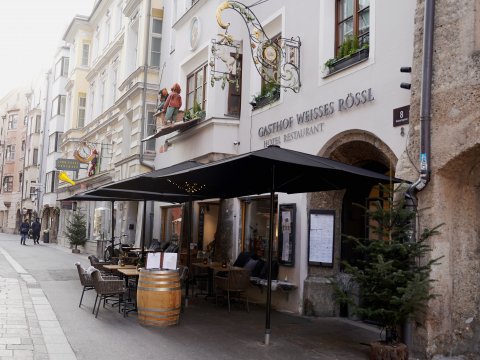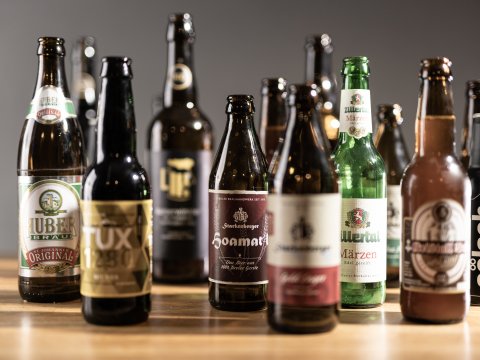The Hills are Alive With the Taste of Schnitzel

The lush meadows and craggy peaks of the Mittelgebirge mountains near Innsbruck are the perfect place to combine hiking with eating. Our intrepid reporters set out on a trail for foodies taking them from one hut to the next, each offering not only delicious cuisine but also a bed for the night.
What. A. View. After what seems like a never-ending hike I have finally reached the Enzianhütte, a traditional mountain hut just a few kilometres north of Tirol’s regional capital Innsbruck. Just as my eyes soak up the wonderful panorama of the Inn Valley, my nose catches a familiar aroma. A waiter walks past carrying a plate of “Saurer Graukas”. This regional specialty is much more appetising than its translation, which literally means “sour grey cheese”. The grey part comes from the mould that grows on its rind, while the sour part comes from the fact that it is often served with raw onions, vinegar and oil. Washed down with a freshly poured beer, it is one of my absolute favourite foods in Tirol. I gaze up at the cobalt blue sky, take a gulp of beer and then look down into the valley below. Before me lies the sprawling city of Innsbruck, flanked to the north and south by high mountains. Can you see the famous Golden Roof from up here? It’s hard to tell in the hazy summer light, but on a clear autumn day you may well be able to.
I am in heaven. Just 24 hours ago I was trudging through heavy Hamburg drizzle on my way to the railway station, wrapped up in a thick jumper and accompanied by my friend Kathrin. As our train rolled out of Hamburg and across the Elbe river we both fell sound asleep – to awake 13 hours later to dazzling sunshine and T-shirt weather in Innsbruck. Mountains! Blue sky! A great start, we agreed, to our three-day hike at the foot of the Nordkette mountains. This time we have decided to take things easy with a relatively flat route inthe valley instead of extreme adventures in the high mountains. Rest and relaxation instead of exertion and exhaustion. Our short break in Tirol is an opportunity get away from the stress of daily life and enjoy the best this wonderful region has to offer – not least its food.
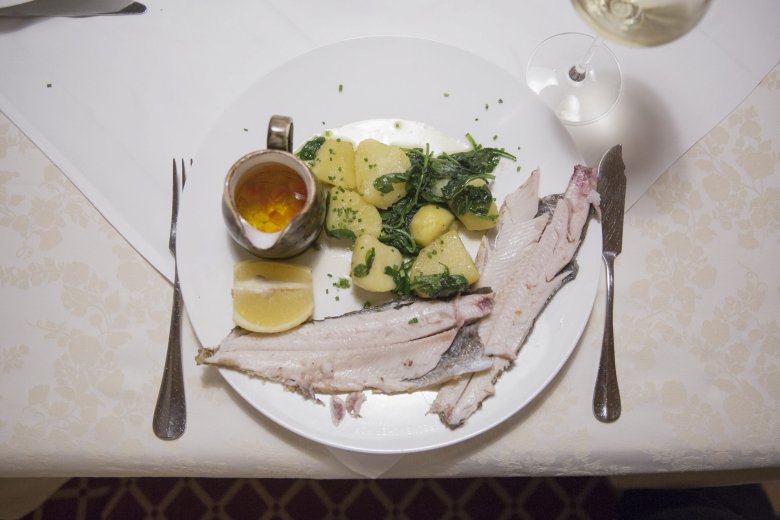
Hiking is hungry work
Our hiking-meets-eating adventure begins at Innsbruck railway station. We walk a few minutes across the bustling city centre to the oldtown, past the famous Golden Roof and through the wonderfully lush Hofgarten park where the flowers are in bloom: purple echinaceas, orange strelitzias, lavender-coloured hortensias. The journey continues to the district of Saggen, home to many fine villas, and across the bridge into the district of Mühlau on the eastern edge of the city. Here, at the foot of the Nordkette Mountains, we find the rushing Mühlauer Bach stream once used to power mighty mills that ground wheat and sawed wood – a hub of industry that is today one of the most peaceful and popular residential areas in Innsbruck. Mühlau is where our easy stroll ends and the trails begin to get steeper. We follow the flow of the Klammbach stream, grateful for its cooling effect on the air. Every now and then the rushing water leaps over a rock, forming a tiny waterfall sending droplets of water spinning into the air and creating a fine mist on our warm skin. A mix of wooden bridges and well-maintained forest trails take us higher and higher, past spots with intriguing names like the “Hexenkuchl” (Witches’ Kitchen), a rocky outcrop where in centuries past witches were said to have met, and the “Teufelskanzel” (Devil’s Pulpit), a vantage point where we stop for a break. I can see a tiny rainbow in the air where the spray of the stream catches the sun. Dragonflies buzz around our heads, zipping this way and that with their fine wings. We set off uphill once again, stopping every now and then to catch our breath and admire a patch of moss on a rock or the mighty trunks of the dark fir trees which dominate this part of the Alps. The air hangs heavy with the smell of pinewood.

We are both getting pretty hungry. I am a big fan of Tirolean food. Some of my favourites include the pasta-pocket-like “Schlutzkrapfen”, the hearty “Erdäpfelblattln” and, last but not least, the legendary “Kaspressknödel” cheese dumplings. Such is my love of cheese dumplings that I often make them back home in Germany to remind myself of Tirol – though where I live in Hamburg it is impossible to find the Graukäse cheese which is an essential ingredient. “I know exactly how you feel,“ said the lady who runs my local cheese shop. “I love it too, but I can’t find a dairy near here that makes it. I just pack as much as possible into my suitcase when I am in Austria and bring it back here for me and my family.”
We finally reach the Enzianhütte, find a table in the sunshine and order, you guessed it, a plate of "Saurer Graukas". Tangy yet mild, sour yet not overpowering – it is just as good as I remembered. A great way to start our little culinary adventure.
Food for thought
We would like nothing more than to stay sitting in the sunshine, but we have to head off if we want to reach the village of Thaur by nightfall. This time we have the pleasure of walking downhill, through thick forests and open meadows. All of a sudden we see something glistening in the trees – a plastic chair decorated with all manner of ribbons, feathers and even old VHS video tape. It looks a little like a place of worship, a site created by or for a friendly witch. Just as we are ready to turn around and continue our journey, a woman does indeed come out from behind the trees. Her name is Karin Ferrari and we have just been admiring her latest work. Entitled "The New Holy", it revolves around neo-shamanism, tech punk and consumer culture. It is just one of several pieces she has on display in the forests around Thaur and Rum. There are no signs pointing the way – they can only be found using GPS. We, as it turns out, have stumbled across one by chance. One of the main themes in Ferrari’s work is consumerism as a kind of quasi-religion. To illustrate her point she has taken a number of traditional wayside shrines, found throughout Tirol, and removed the religious figure, often a saint, to replace it with the logo of a global corporation such as Adidas. Worshipping at the altar of globalisation. Food for thought.
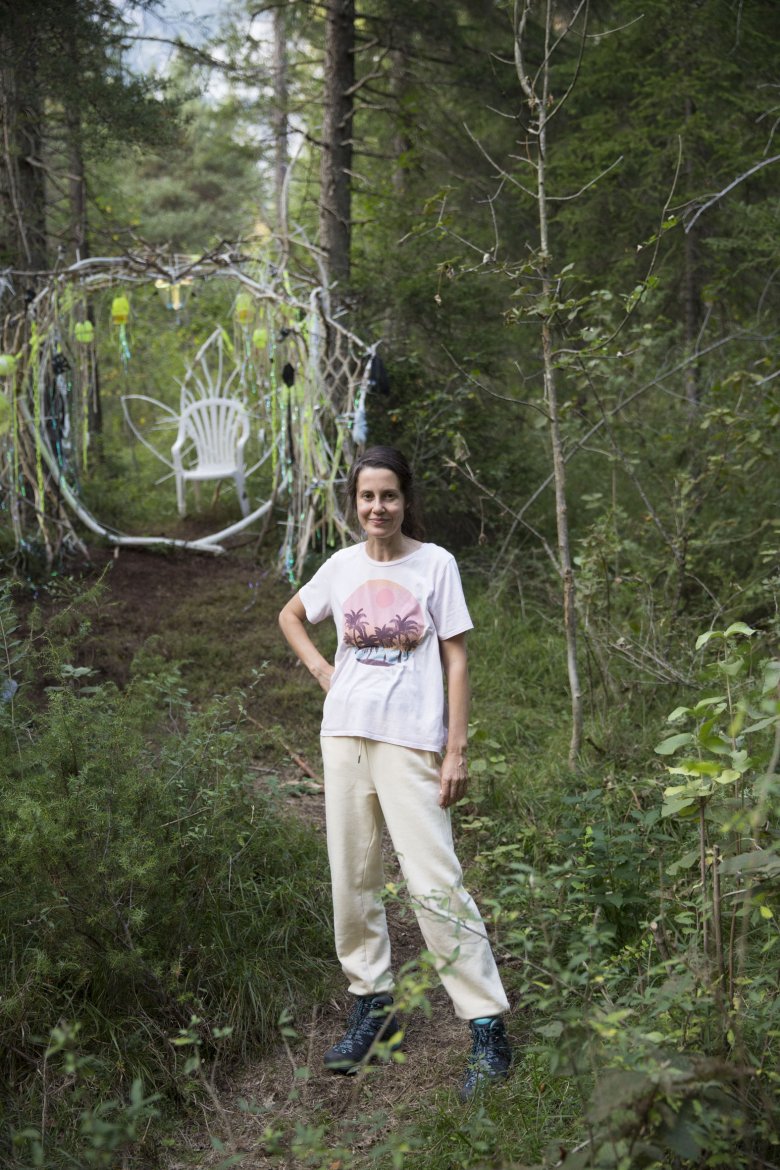
We continue our journey, skirting the forest as we head downhill. The afternoon has turned to evening, but the air is still warm as the sun slowly sets behind the Nordkette Mountains. We reach the small village of Thaur and head straight to the Gasthaus Stangl, a traditional guesthouse with wood-panelled dining rooms and a selection of local classics on the menu. We opt for the beef goulash before heading up to our rooms for an early night. Tired from the day’s adventures, we are happy to slip under the duvet and into the Land of Nod. It is this combination which makes places like the Gasthaus Stangl so unique – somewhere between a hotel with a fine dining restaurant and a self-catering holiday home. After a long day out and about, you can settle down to a hearty meal before heading upstairs to enjoy a good night’s sleep.


Time for the third course
The next morning we head into the centre of Thaur, to the village church, from where we take a steep trail leading up to the Romedikirchl, a small chapel just a short walk from the ruins of the former Thaurer Burg fortress. We have once again been blessed with fantastic weather – blue skies and warm sunshine. The next destination on our foodie adventure is the Romediwirt, another traditional guesthouse just a few minutes on foot from the castle ruins. “Spirituality, history and fine food are rarely found in such close proximity as here at this wonderful vantage point” – the guidebook is certainly not wrong. We take a look inside the Romedikirchl, then walks around the ruins – now it’s time for the third course!

Arriving at the Romediwirt, we immediately notice its modern, minimalist style. Settling down at a table next to the traditional tiled oven, used in Tirol for many centuries as the main source of heating in farmsteads, we are seriously hungry. We would both like to order every single thing on the menu, but in the end we opt for a hotchpotch of small dishes – a kind of Tirolean tapas. Grey cheese soup! Creamy, acidic, tangy and smooth. Cheese dumplings! As good as ever. Spinach dumplings with melted butter – heavenly. Schlutzkrapfen – small pasta pockets with a potato filling served with grated parmesan.

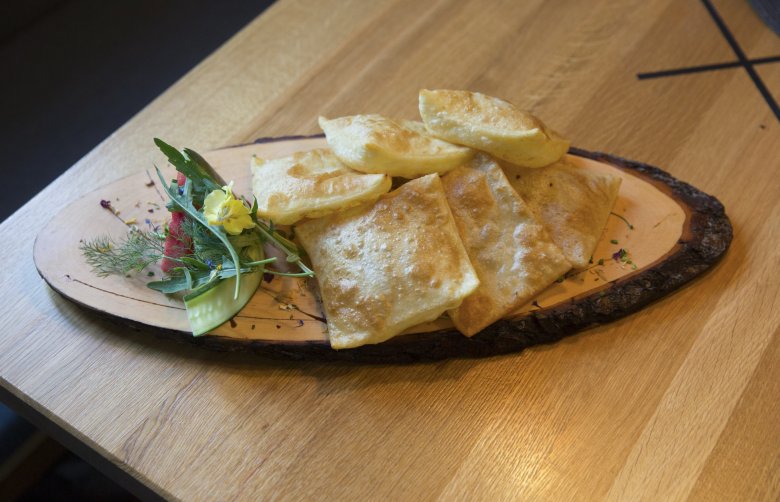
Erdäpfelblattln: thin slices of potato fried in fat and served with sauerkraut, bacon, laurel leaves and juniper berries. We had planned to go into the nearby village of Absam to have dinner, but after our huge lunch we are so full that we just go out for dessert – apricot dumplings washed down with a glass of local schnapps. Or, to be honest, two – one apricot schnapps, one pear schnapps. By the time we get back to our rooms we are more than ready for bed. Just time to open the door to the balcony and let the cool mountain air drift in and send us off to sleep.
Grand finale in Gnadenwald
Our third and final day takes us first to the basilica in Absam, where we admire a Mother of God image which, legend has it, suddenly appeared on a window ledge at a farmhouse in the village in 1797. Researchers today are still unable to give a more plausible version of its provenance. The picture is housed in the basilica in Absam, making it one of Tirol’s most important places of pilgrimage. The image is an unusual portrait in what can best be described as a kind of impressionist style. We head out of the basilica and onto the Besinnungsweg, a trail heading through fields and forests. The landscape is wonderful, despite the light drizzle. Today’s route is totally flat. There is, we agree, something meditative – indeed, almost religious – about steadily putting one foot in front of the other, over and over again. The end of the trail is in Gnadenwald, a pretty hamlet with two main attractions: the Chapel of Saint Martin and the Hotel Speckbacher Hof. We visit the former before settling down in the latter for our final meal in Tirol – a real treat in the form of “Zwiebelrostbraten”, beef with fried onions and a thick sauce accompanied by all manner of healthy veggies on the side. A fine conclusion to what has been a hugely enjoyable hiking-meets-eating adventure.
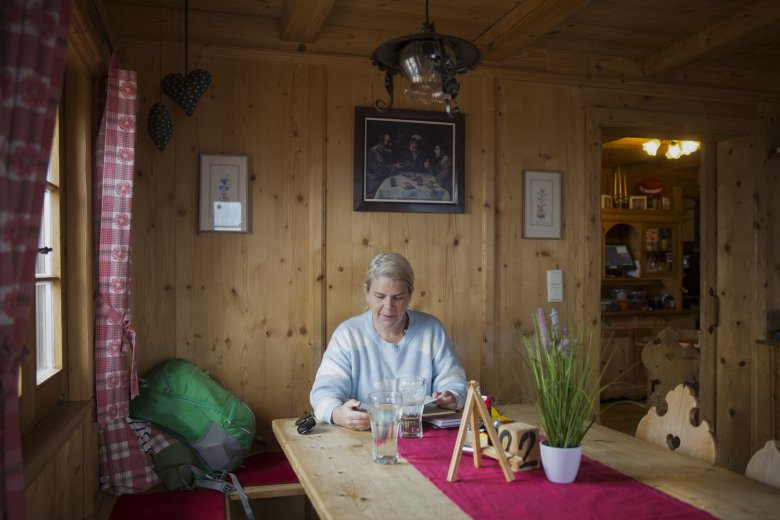
From Gnadenwald we take a taxi back to Innsbruck – just a 20-minute ride all the way to the railway station, where our train back to Hamburg awaits. Before we hop on board, I just have time to pop into a shop and by a kilo of Graukäse cheese. That should hopefully be enough to keep me going until my next trip to Tirol!









